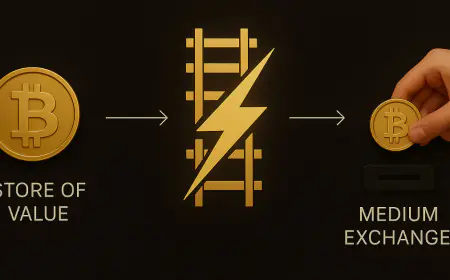Is Crypto Mining Profitable in 2023? Top 5 Crypto Miners
Mining of proof-of-work consensus-based cryptocurrencies has become a multi-billion dollar industry despite the recent slump in the crypto sector. Mining firms continue to expand their operations in regions which are crypto-friendly and have low electricity rates. Countries like El Salvador have also become a part of the industry via renewable sources of energy like geothermal […]

Mining of proof-of-work consensus-based cryptocurrencies has become a multi-billion dollar industry despite the recent slump in the crypto sector. Mining firms continue to expand their operations in regions which are crypto-friendly and have low electricity rates. Countries like El Salvador have also become a part of the industry via renewable sources of energy like geothermal energy.
Cryptocurrency mining is the process of using computer hardware to solve complex mathematical problems in order to verify cryptocurrency transactions and earn rewards. The first cryptocurrency to use this process was Bitcoin, and it has since been adopted by many other cryptocurrencies.
Crypto mining can be a profitable activity, but it requires a significant investment in hardware and electricity. Mining can also be a very energy-intensive process, which has led to concerns about its environmental impact. Despite the challenges, crypto mining remains a popular activity for many people and corporate entities. The process is a way to earn cryptocurrency without having to buy it, and can be a fun and rewarding hobby.
The crypto mining industry is yet to be regulated and recognized around the globe but gradually, the trend is shifting. Popular firms like Marathon Digital have been officially listed on NASDAQ opening doors for investors to get involved in the mining business.
What is Crypto Mining?
Crypto mining, also known as cryptocurrency mining, is the process of creating new units of digital currencies, commonly referred to as coins, through the use of computer processors to solve complex mathematical problems. Mining cryptocurrencies is an essential component of many blockchain networks, including Bitcoin, as it ensures the integrity and security of the underlying network by verifying and recording transactions.
How Does Crypto Mining Work?
Here’s a simplified explanation of how crypto mining works:
- Transaction Validation: When users initiate transactions on a blockchain, these transactions are broadcast to the network. Before being added to the blockchain, these transactions need to be verified to ensure their validity and prevent double-spending (using the same cryptocurrency units for multiple transactions).
- Proof of Work (PoW) Consensus: In a Proof of Work-based blockchain, which is the most common consensus mechanism for mining, miners compete to solve complex mathematical puzzles or cryptographic algorithms. This process is referred to as “Proof of Work” because miners must demonstrate that they have expended computational power to find a valid solution.
- Mining Process: Miners use specialized hardware, such as powerful computers equipped with GPUs or ASICs, to perform extensive computations in an attempt to find the correct solution to the cryptographic puzzle. This requires a significant amount of computational power and energy.
- Block Creation: The first miner to successfully solve the puzzle gets to create a new block that includes a batch of validated transactions. This block contains a reference to the previous block, forming a chain of blocks (hence, the term “blockchain”) with all transactions in the network’s history.
- Block Reward: As a reward for their efforts and the resources expended, the miner who successfully creates a new block is rewarded with newly minted cryptocurrency coins. This reward serves as an incentive for miners to continue participating in the network and maintain its security.
- Difficulty Adjustment: To regulate the rate of block creation and ensure that new blocks are added at a predictable rate (e.g., every 10 minutes for Bitcoin), the difficulty of the mathematical puzzles adjusts periodically. This difficulty adjustment keeps the mining process competitive and prevents blocks from being created too quickly or too slowly.
- Security and Decentralization: By requiring miners to invest computational resources and energy, PoW-based mining ensures that the network remains secure and protected against potential attacks. Additionally, the decentralized nature of mining, with multiple miners participating worldwide, enhances the overall security and resilience of the blockchain network.
Is Crypto Mining Profitable in 2023?
Crypto mining in 2023 may still be profitable, but the level of profitability may not be as high as it was in previous years. Several factors contribute to the changing landscape of crypto mining profitability:
- Crypto Market Volatility: The cryptocurrency market experienced fluctuations in value during 2022 and early 2023, with crypto prices being down significantly from their peaks. This market volatility can impact the profitability of mining, as the value of mined coins affects the potential rewards for miners.
- Energy and Hardware Costs: Mining requires specialized hardware, such as ASICs, GPUs, or CPUs, depending on the cryptocurrency being mined. The cost of acquiring and maintaining this mining equipment, along with rising energy prices, can affect the overall profitability of mining operations.
- Shift in Mining Methods: Mining with graphics cards or GPUs, which was popular in the past, may no longer be as profitable due to increased hardware costs and electricity consumption. Some experts suggest that GPU mining may no longer be a viable option for generating significant profits.
- Emerging Mining Technologies: As the cryptocurrency market evolves, new mining technologies and practices may emerge to make mining more efficient and sustainable. Miners may explore alternative consensus mechanisms like Proof of Stake (PoS), which is less energy-intensive than Proof of Work (PoW) used by Bitcoin.
- Specific Cryptocurrencies: The profitability of mining can vary depending on the cryptocurrency being mined. Some cryptocurrencies may offer better rewards and lower mining difficulty, making them more profitable for miners.
How to Start with Crypto Mining?
To start with crypto mining in 2023, follow these steps:
- Understand Cryptocurrency Mining: Familiarize yourself with the concept of cryptocurrency mining. The process involves validating transactions on a blockchain network and adding new blocks to the blockchain using powerful computers known as mining rigs.
- Choose a Cryptocurrency: Decide which cryptocurrency you want to mine. Popular options include Bitcoin, Ethereum, Monero, Litecoin, and many others.
- Research Mining Hardware: Research and select the appropriate mining hardware based on the cryptocurrency you choose. Depending on the algorithm used by the cryptocurrency, you may need to use GPUs, ASICs, or CPUs for mining.
- Build or Purchase a Mining Rig: Depending on your technical expertise and budget, you can either build a mining rig yourself or purchase a pre-built one. Building a mining rig allows for customization and cost-effectiveness.
- Install Mining Software: Download and install mining software compatible with your chosen cryptocurrency and hardware. Popular mining software options include CGMiner, BFGMiner, and EasyMiner.
- Join a Mining Pool (Optional): Consider joining a mining pool. Mining pools are groups of miners who combine their computational power to increase their chances of successfully mining a block. The rewards are distributed among pool members based on their contribution.
- Manage Mining Operation: Regularly monitor your mining operation to ensure its efficiency and profitability. Keep an eye on factors like electricity consumption, hardware performance, and the cryptocurrency market.
- Calculate Profitability: Use crypto mining profitability calculators to estimate potential earnings and expenses based on the current cryptocurrency prices, mining difficulty, and your mining setup.
- Implement Security Best Practices: Ensure that your mining operation is secure to protect your mined cryptocurrencies. Use strong passwords, enable two-factor authentication, and keep your mining software and hardware up to date.
- Understand Tax Obligations: If you are earning income from crypto mining, be aware of the tax implications and report your mining income accordingly on your tax return.
Pros and Cons of Traditional Crypto Mining
Mining cryptocurrencies without using renewable sources of energy can have major impacts. Preferred energy sources include mining cryptocurrencies in wind farms or use geothermal energy for the same:
Pros of Traditional Crypto Mining
- Potential for Profits: Successful mining can lead to significant profits, especially when the value of cryptocurrencies rises. Miners are rewarded with newly minted coins for their computational efforts, which can be valuable if the cryptocurrency appreciates.
- Independence and Control: Traditional crypto mining allows individuals to participate in the cryptocurrency ecosystem directly. Miners have control over their mining operations and are not dependent on third-party platforms or intermediaries.
- Supporting the Blockchain Network: Miners play a vital role in securing and maintaining the blockchain network’s integrity. By validating transactions and adding new blocks, miners contribute to the decentralized nature of cryptocurrencies.
- Possibility of Passive Income: Once a mining rig is set up, the mining process can generate passive income as long as it remains profitable and operational. This can be attractive to those seeking additional income streams.
- Learning Opportunity: Engaging in crypto mining provides an opportunity to learn about blockchain technology, the mechanics of cryptocurrencies, and the mining process itself.
Cons of Traditional Crypto Mining
- High Initial Investment: Setting up a mining rig can require a significant upfront investment in hardware, software, and electricity costs. The expenses associated with mining can impact the overall profitability, especially during periods of market volatility.
- Energy Consumption: Traditional crypto mining is energy-intensive, and the electricity costs can be substantial, affecting both profitability and the environmental footprint.
- Technological Obsolescence: The rapidly evolving nature of mining hardware and algorithms means that mining equipment can become outdated quickly. Miners may need to upgrade their hardware regularly to remain competitive.
- Mining Difficulty: As more miners join the network, the mining difficulty increases. This can reduce individual miners’ chances of successfully mining a block and receiving rewards.
- Market Volatility: Cryptocurrency prices are highly volatile, and mining profits can fluctuate based on the market conditions. A bearish market may lead to lower profitability or even operating at a loss.
- Regulatory and Legal Challenges: Depending on the region, crypto mining may face regulatory uncertainties, taxation complexities, or restrictions on energy consumption.
Leading Crypto Miners
Here are the leading crypto mining firms:
- Bitmain: Bitmain is a Chinese firm and one of the biggest players in the cryptocurrency mining industry. They are renowned for producing reliable and efficient ASIC miners and proprietary chips. Bitmain operates a large collection of mining farms and has ambitions to further expand in the coming years. They also run one of the most powerful mining pools in the world, AntPool.
- Riot Blockchain Inc.: Riot Blockchain is one of the largest publicly traded Bitcoin miners in the U.S., focusing on supporting the Bitcoin ecosystem through proof-of-work mining. They operate mining operations powered by renewable energy sources. Riot Blockchain’s mission is to become a significant supporter of the Bitcoin network.
- Marathon Digital Holdings: Marathon Digital plans to add 167,000 bitcoin miners to its fleet by early 2023, which would boost its hash rate significantly. They aim to continue increasing their hash rate and are focused on maximizing profitability in the cryptocurrency mining space.
- Hut 8 Mining Corp: Hut 8 Mining is another significant player in the cryptocurrency mining industry. Their upcoming Ontario facility is expected to bring the company’s total hash rate to 3.35 exa-hashes per second by the end of March 2023.
- Genesis Mining: Genesis Mining operates one of the biggest Ethereum mining farms. They have a significant presence in the cryptocurrency mining space, particularly for Ethereum.
While the above-mentioned mining firms continue to make profits, firms like Compute North have filed for bankruptcy due to the slump in the price of Bitcoin (BTC) in 2022 along with global macroeconomic conditions.
Decentralized vs Centralized Cryptocurrency Mining
Decentralized cryptocurrency mining and centralized crypto mining are two distinct approaches to the process of validating transactions and adding blocks to a blockchain. They differ significantly in terms of their structure, control, and implications for the cryptocurrency ecosystem.
Structure and Control
Decentralized Cryptocurrency Mining
In a decentralized mining system, multiple independent participants, often referred to as miners, contribute their computing power to the network. These miners compete to solve complex mathematical puzzles to validate transactions and add new blocks to the blockchain. The process is trustless and distributed, meaning there is no central authority overseeing the mining operations. Examples of cryptocurrencies using decentralized mining include Bitcoin (Proof-of-Work) and Ethereum (currently transitioning to Proof-of-Stake).
Centralized Crypto Mining
Centralized crypto mining, on the other hand, involves a single entity or a limited number of entities that control the majority of the mining power on the network. These entities often operate large-scale mining farms and pool their resources together to have a significant advantage in the competition to validate transactions. While individual miners can still participate, the overall control and decision-making lie in the hands of a few centralized entities. This concentration of mining power is commonly referred to as “mining centralization.”
Security and Resilience
Decentralized Cryptocurrency Mining
Decentralized mining provides a higher level of security and resilience to the cryptocurrency network. Since mining is distributed among numerous independent participants, it becomes more challenging for any single entity to control the network or manipulate transactions. It ensures that the network remains robust and resistant to attacks, enhancing its overall security.
Centralized Crypto Mining
Centralization of mining power raises concerns about potential vulnerabilities and threats to the network’s security. If a significant portion of the mining power is controlled by a single entity, it could potentially engage in a 51% attack, where it can manipulate transactions and potentially double-spend coins. This undermines the trust and integrity of the cryptocurrency.
Accessibility and Decentralization Ideals
Decentralized Cryptocurrency Mining
Decentralized mining aligns with the core principles of blockchain technology, which aims to empower individuals, promote inclusivity, and maintain a censorship-resistant and open network. It allows anyone with the necessary hardware and software to participate in the mining process, contributing to the network’s security.
Centralized Crypto Mining
Centralization of mining can lead to concerns over accessibility and concentration of power. If a few entities control the majority of the mining power, it can create a situation where smaller participants are excluded from the mining process. This may go against the decentralized ideals of the cryptocurrency ecosystem.
In summary, decentralized cryptocurrency mining and centralized crypto mining represent two opposing models for validating transactions on a blockchain. Decentralized mining emphasizes security, inclusivity, and trustlessness, while centralized mining raises concerns about concentration of power and potential vulnerabilities. The choice of mining approach can significantly impact the overall health and resilience of a cryptocurrency network.
Regulatory Concerns
Some of the key regulatory concerns around crypto mining include:
- Environmental Impact: The energy-intensive nature of crypto mining, especially for proof-of-work cryptocurrencies like Bitcoin, has raised environmental concerns. Mining operations consume substantial amounts of electricity, leading to increased carbon emissions and potential strain on local power grids.
- Energy Consumption: As crypto mining operations continue to grow, some jurisdictions have expressed concerns about the strain they place on energy resources. Mining farms, especially those in regions with cheap electricity, can lead to increased demand and impact the availability of energy for other purposes.
- Location and Land Use: The location of mining facilities can be a regulatory concern, particularly if they encroach upon protected or ecologically sensitive areas. Governments may seek to regulate the placement and size of mining farms to mitigate potential environmental impacts.
- Financial Stability: Governments and financial regulators are concerned about the potential risks posed by crypto mining to financial stability. Large-scale mining operations can affect the supply and demand dynamics of cryptocurrencies, potentially leading to increased price volatility.
- Money Laundering and Illicit Activities: Crypto mining has been associated with money laundering and other illicit activities due to the pseudonymous nature of cryptocurrencies. Regulators are concerned about the potential use of mining operations to facilitate illegal transactions.
- Taxation and Reporting: Authorities are keen on ensuring that miners comply with tax regulations and report their crypto mining income appropriately. The lack of clear guidelines in some jurisdictions has led to ambiguity and potential non-compliance.
- Consumer Protection: Regulatory concerns also extend to protecting consumers from fraudulent or deceptive mining schemes and ensuring transparency in mining operations.
- Use of Renewable Energy: Some governments may encourage or mandate the use of renewable energy sources for mining operations to reduce the environmental impact.
- Licensing and Permits: In some jurisdictions, crypto mining operations may require licenses or permits to operate legally. Authorities may impose specific conditions on mining businesses to address environmental and other concerns.
- Cross-Border Regulatory Disparities: The global nature of crypto mining can lead to regulatory disparities across different countries and regions, creating challenges for international coordination and enforcement.
Conclusion
Cryptocurrency mining plays a vital role in maintaining the security and integrity of blockchain networks, but its profitability can fluctuate based on various factors. While crypto mining can still be profitable in 2023, potential miners should carefully consider factors such as cryptocurrency prices, energy costs, and the type of hardware they use. Mining profitability is subject to market conditions and may require regular adjustments to remain competitive in the ever-changing cryptocurrency landscape.
As the cryptocurrency landscape continues to evolve, mining practices and technologies are likely to adapt to changing market conditions. Some firms like Compute North and Core Scientific have filed for bankruptcy in the past few months while others like Marathon Digital plan to expand their operations.
Additionally, before getting involved in crypto mining, there are many factors to consider, such as the type of cryptocurrency you want to mine, the cost of hardware and electricity, and the difficulty of the mining algorithm.
What's Your Reaction?




































































































